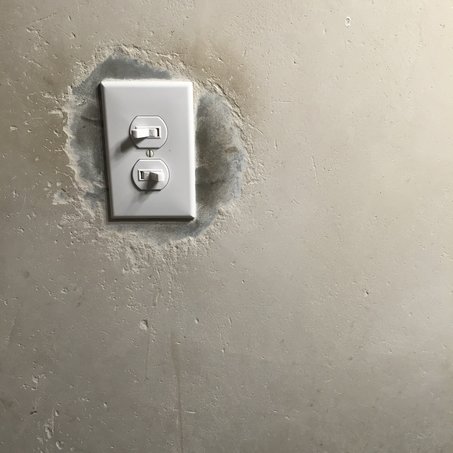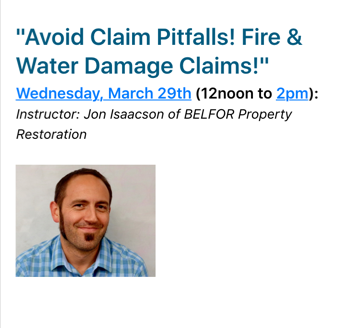 You have them on board (recruitment), now it's time to on-board (development) You have them on board (recruitment), now it's time to on-board (development) In the progression of building a team, by the time you reach the on-boarding phase you have done much of the initial heavy lifting. Where in years past candidates would seek out your organization looking for an opportunity for employment, the tables have now turned and most companies are actively engaging in proactive recruiting measures. According to Fit Small Business, a 2017 study from Hire Well noted that, “52% of hiring managers claim that passive candidate recruitment has been less effective.” When your corporate and/or local listing are competing not only with a void in the labor market of available candidates but also the likes of professional recruiters on sites such as LinkedIn, your traditional methods of recruitment are going to lose their effectiveness. Employers that are looking to add talent to their organization are going to have to adopt the posture of hunters who understand their target and are adapting to the surroundings which would include a shortage of prey. One quick tip is to expedite the screen process through simple means such as texting candidates as introduced in our article, Text For Hire. If you have new employees to on-board into your organization than you have at least been able to chip away and some fragment of the quantity issue. You have increased your headcount, even if that is only one employee, which is something many companies are struggling to do. This deserves at least a golf clap. Now we want to begin the quality aspect of team additions, we want to create an entry experience that excites them to engage in the organization’s mission. In their book, Insuring Tomorrow, Tony Canas and Carly Burnham work to bridge many of the gaps between organizations and millennial employees. Tony and Carly have some practical tips for the first day and orientation throughout their book in addition to reversing a myth about millennials and criticism, “They’re absolutely comfortable with getting constructive feedback, but worry much more if they get no feedback, which is what is truly demotivating for a Millennial (p 58).” When on-boarding new team members, those in positions of leadership should correct bad habits and details early. As the Hall of Fame UCLA basketball coach John Wooden states, “A coach is someone who can give correction without creating resentment.” If your hiring process has enabled you to attract candidates that connect with your organizational mission and values then this tone of coaching should already have been outlined. The right additions want to know how to do things the right way and how to excel in their roles within the team. Honest feedback is good feedback when progressing towards a goal. If there is push back on the feedback given, leaders will need to determine whether there was a miscommunication, an inability or an unwillingness as outlined in our article Conflict. Each response requires a different approach and will result in a different outcome. All of our processes should be geared towards creating clarity as a lack of clarity is the prime catalyst for the corrosive effects of confusion and explosive tension of negative conflict. As we establish clarity in our vision, our values and our systems then we can develop consistency in our processes as well as accountability in our organization. Every phase is important and clear communication is essential from recruitment, to on-boarding and on through employee development. Be clear about your values and consistent in your approach and the process will create team members who are engaged and able to assist with building accountability throughout the organization. // References // 1) Fit Small Business; 2) Insuring Tomorrow
0 Comments
 Jon Isaacson published in FM World Jon Isaacson published in FM World Serving as director for our local peer to peer networking group for facilities, maintenance and risk professionals has allowed some exposure to the resources and publications in those industries. I had an article published in print late 2016 for a industry leading facilities publication, FM World. The article tilted Powerful Points For Your Next Presentation covers getting buy-in for projects as a professional whether you are presenting to internal executives or networking with external groups. As facilities managers, we all are in sales - marketing our facilities values, creating buy-in for our preventative maintenance budgets and developing collaboration for our management vision. This is true of professionals in all industries at all levels in their organizations. In our modern markets, developing our soft skills as professionals is as important as our technical proficiency. Those who have responsibilities in the arenas of facilities, maintenance and risk may find value in Local Facilities Manager's Connection (LFMC) which meets monthly in the Eugene / Springfield, Oregon area.  Are you training or wasting time? Are you training or wasting time? Three keys to effective training: 1) Training should be clear 2) Training should be concise 3) Training should be interactive Clarity is the key to ensuring that you have a point. The sequence of questions any effective presenter must ask are, "Do I have a point? Is my point worth sharing? How can I connect with my audience to get this point (the point which I have clarified in my own mind and that I am confident is worth sharing) to transfer effectively to my captive partners?" If you don't have a point, it isn't worth sharing or you cannot relay the information effectively - don't have the meeting. Whether you are the boss or not, if the point of a business is to be productive and make money, pointless meetings such all of the above out of your team. What does it mean to be concise? Functionally this means that if you have a point you should get to it. Whether you set a time limit or a word limit or have someone you trust give you a secret signal when your presentation is going off the rails, respecting your time and that of your audience requires that you are diligent in using the time you have to get to your point and get on with life. Meeting topic, tone, location and duration are all essential elements. As a presenter, especially if you are a leader in the organization, you must lead by example in the culture of how your meetings will be conducted. How long do you like to sit in meeting? How much information do you retain after 30 minutes of lecture? Making meetings interactive promotes an environment where every individual, their perspectives and their potential are regarded as valuable. Asking questions, discussing scenarios and even mixing up presenters from within your team are simple ways to get the discussion going. Everyone has an opinion, if you have a culture that can receive input as well as direct it to be productive you can create opportunities to harvest ideas, perspectives and passion from within your group. A meeting agenda that is sent out by the organizer at least 24 hours prior to the meeting is an effective means to ensure that there is a point, the time allotted for presentation and the parameters for feedback from the team. The discipline of communicating that we have set aside this time as valuable and have prepared ourselves to be clear, to be concise and to allow for interactive functions will assist us to have better training sessions as well as meetings. If you are preparing for training, meeting or presentation you may find these tips helpful - Powerful points for your next presentation (HERE).  Your Chance To See It Live Your Chance To See It Live If you would like to network with local rental property owners and managers while possibly learning something about avoiding insurance claim pitfalls, join me as I discuss this topic for the Lane Rental Owners Association. This is a new workshop for this group and the official title is "Avoid Claim Pitfalls - Fire & Water Damage Claims!" Course #2012-17 which is eligible for two continuing education credits, upon request, for Licensed Brokers and Property Managers. There is a cost for the course, which includes lunch, presentation and materials, ROA members $40 and Non-members $60. When: Wednesday, March 29th, 2017 Time: 12 - 2pm Location: Hilton Garden Inn Address: 3538 Gateway, Springfield, OR 97477 Pre-registration is required the Friday before the class is held with a maximum of 15 attendees. Call the Lane ROA office to register 541.485.7368, hours are 10am - 4pm Monday through Friday. Event registration HERE. |
AuthorThoughts on personal and professional development. Jon Isaacson, The Intentional Restorer, is a contractor, author, and host of The DYOJO Podcast. The goal of The DYOJO is to help growth-minded restoration professionals shorten their DANG learning curve for personal and professional development. You can watch The DYOJO Podcast on YouTube on Thursdays or listen on your favorite podcast platform.
Archives
March 2023
Categories
All
<script type="text/javascript" src="//downloads.mailchimp.com/js/signup-forms/popup/unique-methods/embed.js" data-dojo-config="usePlainJson: true, isDebug: false"></script><script type="text/javascript">window.dojoRequire(["mojo/signup-forms/Loader"], function(L) { L.start({"baseUrl":"mc.us5.list-manage.com","uuid":"b9016446bd3c6a9f0bd835d4e","lid":"83282ffb9e","uniqueMethods":true}) })</script>
|
Jon Isaacson |
Connect. Collaborate. Conquer.
© COPYRIGHT 2015. ALL RIGHTS RESERVED.
|



 RSS Feed
RSS Feed